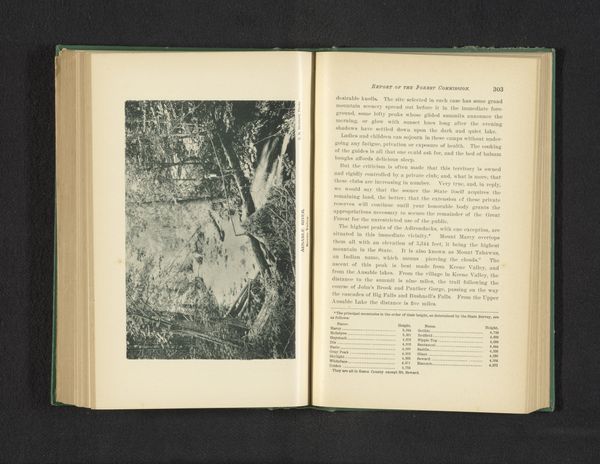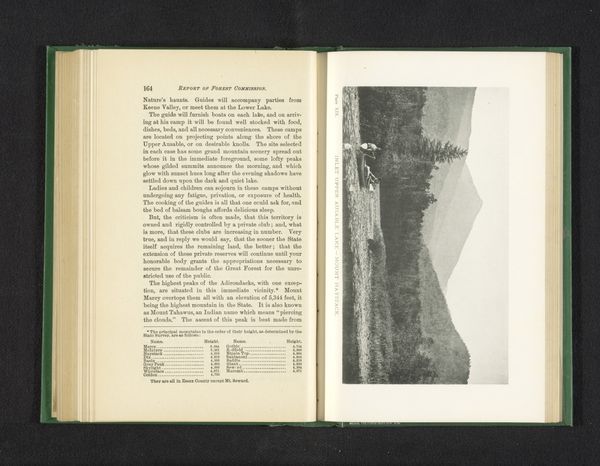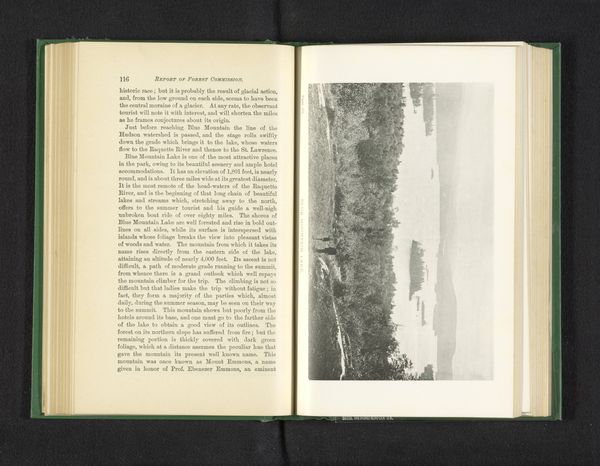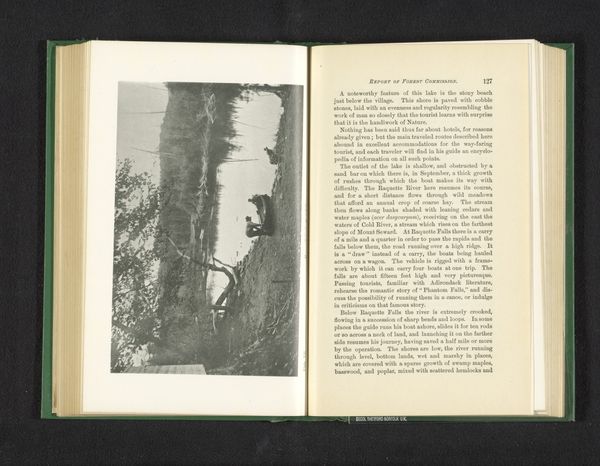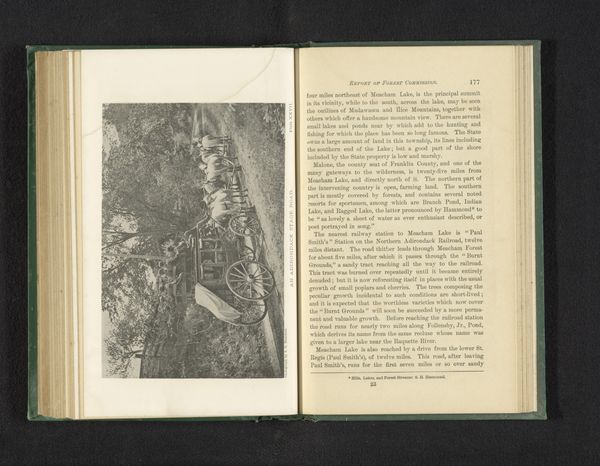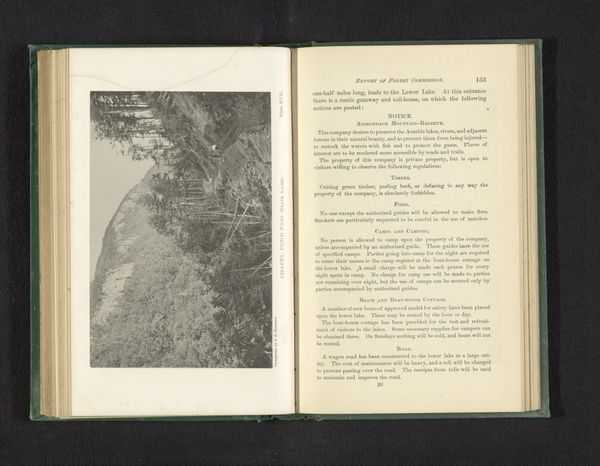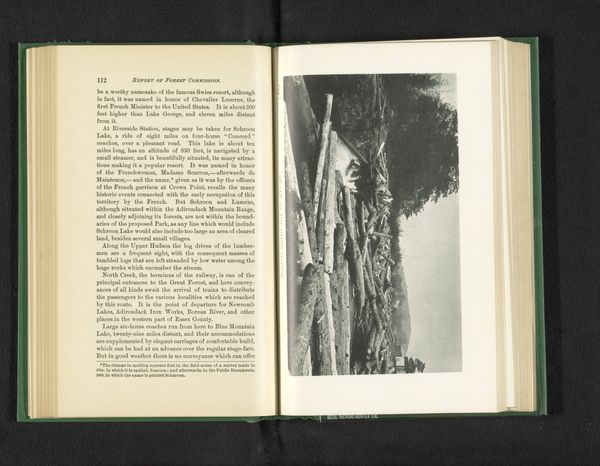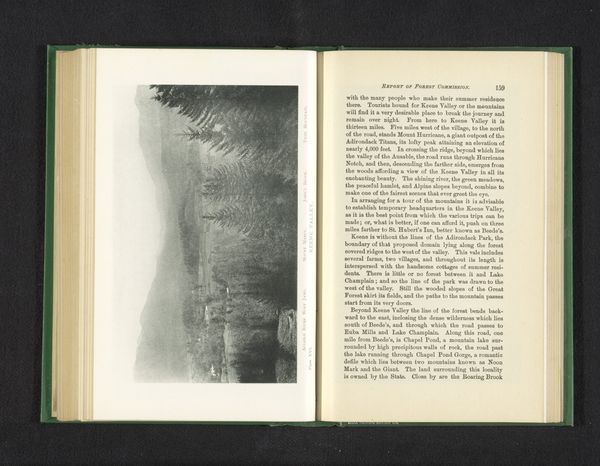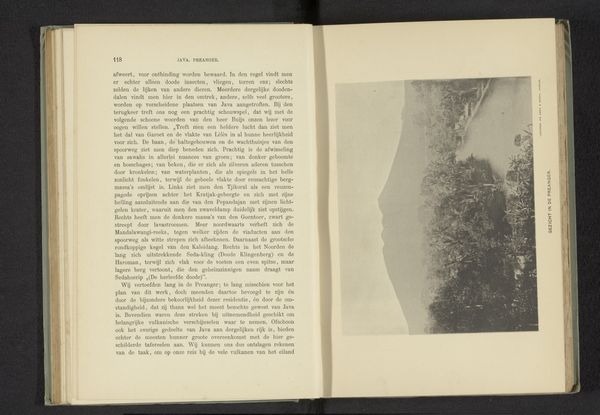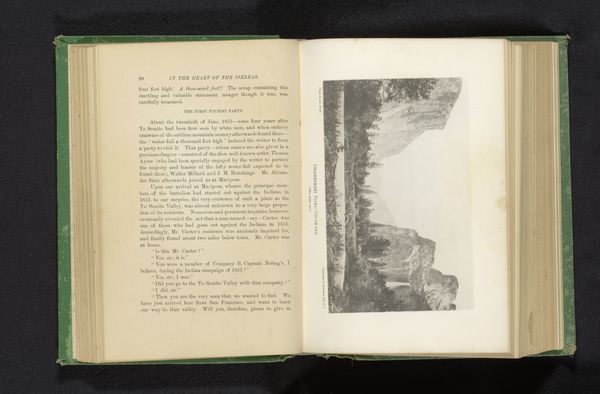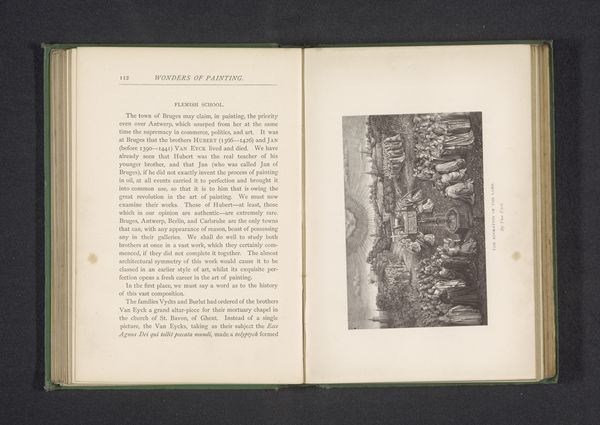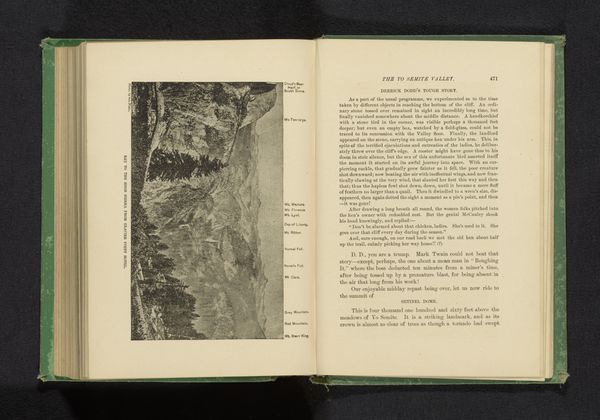
Dimensions: height 113 mm, width 177 mm
Copyright: Rijks Museum: Open Domain
Curator: So this gelatin silver print from 1891 is titled "Chapel Pond Pass (State land)" and it's by Seneca Ray Stoddard. Editor: It feels so closed in, claustrophobic almost. A dense, overwhelming green, and then that stark, looming rock face… unsettling, really. What strikes you most? Curator: For me, it's the texture. Look at the detail he captured. You can practically feel the dampness clinging to the foliage. You see, Stoddard wasn't just documenting landscape; he was selling an experience, creating desire. He's crafting the Adirondack wilderness into this ideal leisure destination. Editor: So, you're suggesting this isn't just about conveying landscape—but crafting a consumable vision of "wilderness"? The materiality of it – a printed image distributed as propaganda—is at odds with the supposedly untouched land. It seems less about raw nature and more about the process of accessing, extracting, and ultimately consuming the wilderness through leisure. Curator: Precisely. The Hudson River School aesthetic romanticizes this very American impulse to tame the sublime. Stoddard feeds that perfectly. Editor: Yes, and gelatin silver prints offered such reproducibility—democratizing, to an extent, access to these images, while simultaneously contributing to the exploitation of natural resources for the very production of those prints, no? It reveals that tension between artistic creation, industrial processes, and commodification of nature. What feels wild is actually processed. Curator: Well, it also draws attention to photography's dual role as both an artistic medium and an industrial tool. To present both beauty and a constructed experience. Editor: Absolutely. Looking again, I realize that the framing and composition play such a key role. Even with the density, Stoddard directs our eyes carefully, using the limited contrast and viewpoint to create almost theatrical drama. Curator: Indeed. The artificial is part of the perceived experience. We cannot experience true "wilderness", perhaps because, we always mediate with an agenda and tools. Editor: Interesting… that even while confronting images like this—so rooted in physical places and processes, so tethered to specific historical circumstances of production and consumption—we’re still trapped within our own subjective experiences.
Comments
No comments
Be the first to comment and join the conversation on the ultimate creative platform.
